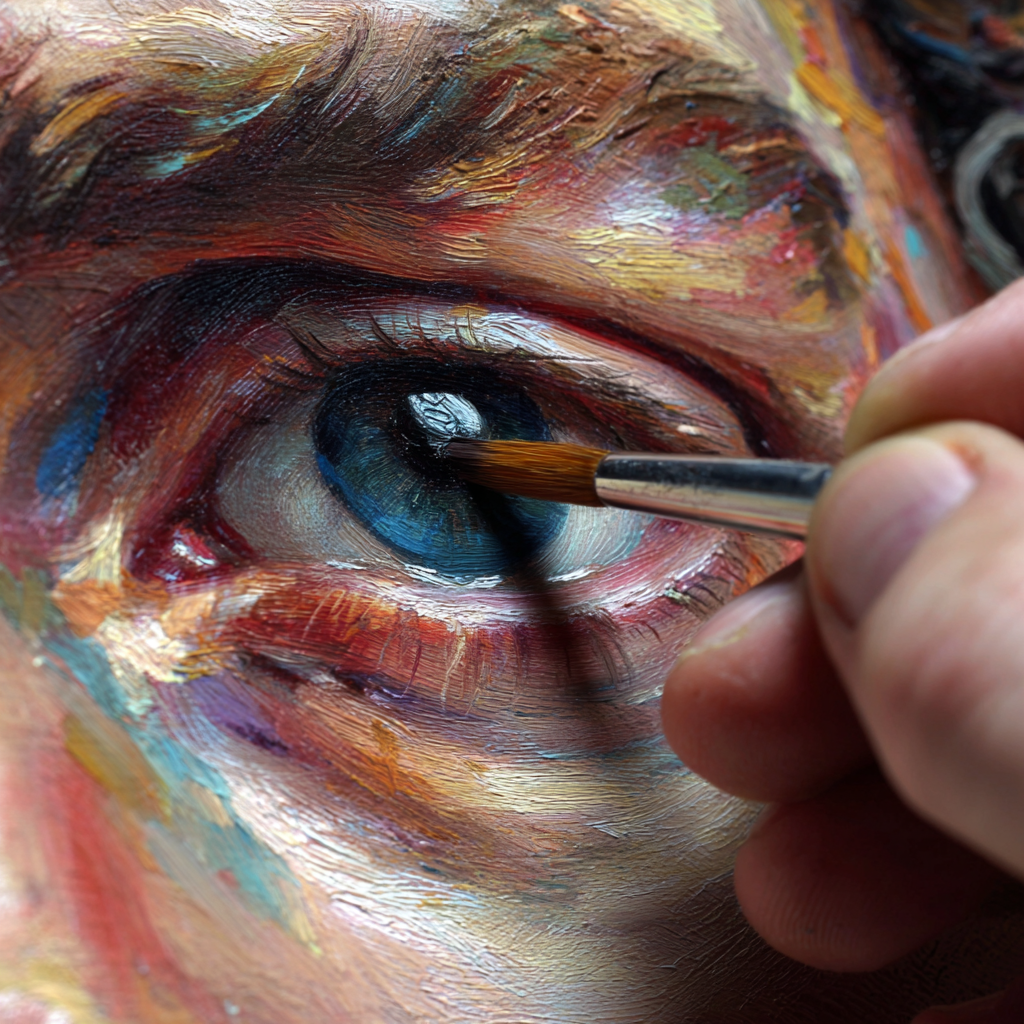Oil painting has been a cornerstone of Western art since the 15th century, with master painters developing techniques that continue to inspire artists today. From the luminous glazes of the Renaissance to the bold brushwork of the Impressionists, these methods reveal not only technical mastery but also unique ways of seeing the world.
1. Glazing for Luminous Depth
One of the hallmarks of Renaissance painting was the use of glazes—thin, transparent layers of oil paint applied over a dried underpainting. Artists like Jan van Eyck and Leonardo da Vinci used glazing to create depth, subtle tonal shifts, and glowing skin tones (Gombrich, The Story of Art, 1995). By allowing light to pass through multiple layers before reflecting back to the viewer, glazes gave paintings a radiant, almost lifelike quality.
Lesson for today: Patience and layering can add richness and vibrancy to modern paintings. Even digital artists often borrow this principle by working in layers to build depth.
2. Chiaroscuro: The Drama of Light and Dark
Caravaggio (1571–1610) revolutionized oil painting with his dramatic use of chiaroscuro, the strong contrast of light and shadow to create mood and volume (Langdon, Caravaggio: A Life, 2012). His technique not only heightened drama but also grounded sacred subjects in gritty realism.
Lesson for today: Contrast is a powerful storytelling tool. Whether in painting, photography, or design, playing with light and dark can guide the viewer’s eye and evoke emotion.
3. Impasto: Painting with Texture
By the 17th century, artists like Rembrandt experimented with impasto—thick, textured applications of paint. Rembrandt often built up highlights, such as on jewelry or fabric, giving his works tactile presence and visual richness (Westermann, Rembrandt: Art and Ideas, 2000). Later, Vincent van Gogh expanded on this, using impasto to express movement and emotion.
Lesson for today: Texture adds dimension. In a world saturated with flat digital imagery, physicality—whether through thick paint, collage, or mixed media—can create an unforgettable sensory experience.
4. Alla Prima: The Direct Approach
The Impressionists, including Claude Monet and Édouard Manet, popularized alla prima (Italian for “at first attempt”), or wet-on-wet painting. Instead of waiting for layers to dry, they applied fresh paint directly over wet passages, capturing fleeting light and color with spontaneity (House, Monet: Nature into Art, 1986).
Lesson for today: Sometimes immediacy is more powerful than perfection. Bold, decisive strokes can capture energy and authenticity that careful planning may lose.
5. Color Theory and Innovation
Masters such as Titian and later J.M.W. Turner pushed the boundaries of color. Titian used warm and cool contrasts to create harmony and balance, while Turner dissolved forms into pure atmospheric color, anticipating abstraction (Hamilton, Turner and the Scientists, 1998).
Lesson for today: Color is not just decoration—it’s structure and emotion. Studying how masters manipulated color can help modern creators build mood and narrative in their work.
Why These Techniques Still Matter
The great oil painters remind us that technique is never just about surface. It is about communication—using materials to convey emotion, light, movement, and story. By revisiting their methods, we not only preserve tradition but also adapt timeless ideas to contemporary creative practices.
Sources Cited
Gombrich, E.H. The Story of Art. Phaidon Press, 1995.
Langdon, Helen. Caravaggio: A Life. Farrar, Straus and Giroux, 2012.
Westermann, Mariët. Rembrandt: Art and Ideas. Phaidon, 2000.
House, John. Monet: Nature into Art. Yale University Press, 1986.
Hamilton, James. Turner and the Scientists. Tate Publishing, 1998.

